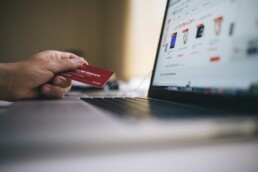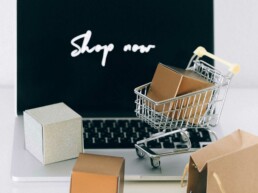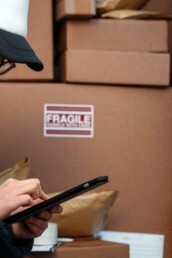5 Essential E-commerce Website Features
Whether you are a well-established brand or just getting started, a well-designed and executed website is essential to success. A recent forecast by statista.com reveals that e-commerce is expected to grow by over 50 percent during the next four years. E-commerce revenues could reach an incredible 7.4 trillion dollars by 2025. To capitalize on the growing market, e-commerce websites and features must cater to new consumer tastes.
Your website is your storefront. From the homepage to the product pages, each segment has specific elements that cannot go ignored if you want to minimize cart abandonment and increase sales. This article will share 5 essential e-commerce website features that contribute to conversion and customer satisfaction.
Must-Have E-commerce Website Features
Responsive Design

Now more than ever, consumers are using multiple devices to scroll, shop, and learn. Screen sizes vary from a watch to a 65” monitor. Furthermore, purchases from mobile devices are on the rise. Retail mCommerce sales (mobile purchases) hit $359 billion in 2021, a 15% increase over 2020.
Your e-commerce brand cannot afford to lose market share because your design isn’t optimized for mobile. Investing in responsive design will make your site mobile-friendly, improve the aesthetic of all screen sizes, and increase the time visitors spend on your site. Nixon.com has an excellent responsive design and great design overall. They cater to a youth lifestyle and have invested in ensuring their buying experience is easy across all devices.
User-Friendly Navigation

There is nothing worse than having to search for what you are looking for and being unable to find the navigation menu. The navigation is like the foundation of your website. It is where every user will go to locate what they are looking for. Make sure the navigation is prominently placed and easy to use. Eye-tracking research shows people spend 80% of their viewing time on the left portion of your website and only about 20% on the right. Consider using secondary navigation on the left side.
An excellent example of solid navigation design is Rothys.com. They have anchored their navigation in the left quadrant with a responsive and extensive dropdown navigation menu for their unique sales verticals. User-friendly navigation enables your consumer to find what they are looking for quickly and effortlessly if a customer has to look too hard for something, they will simply find what they need from a competitor.
Easy and Generous Return Policy

A return policy is often an afterthought for most e-commerce owners, but it can be an effective marketing tool. With more customers shopping online, the details, clarity, and ease of making a return can make the difference between a “sale” and a “save for later.” Ensure your return policy is easy to find and prominently displayed at the point of sale. Use easy-to-understand language. Lastly, make it as simple as possible for a customer to make a return. The more flexibility they have to change their mind, the more likely they will make the purchase.
In fact, 92% of consumers will buy again if the return policy is easy. A great example of a generous return policy is from Zappos.com. They are so confident in their return policy they have placed it in their top header!
Multiple Payment Options

Consumers want to be able to pay with whatever platform, card, or app is most convenient for them. Credit and debit card options are standard. In order to improve conversion and attract a broader audience it is important to offer multiple payment options. Payment options that are gaining traction include; Apple Pay, Google Pay, PayPal, Amazon Pay, Boleto, Stripe, Venmo, Square, and E-wallet. With so many ways to pay it can be hard to narrow which will cater to your specific audience. The essential e-commerce website feature to have is more than one way to pay at checkout. This gives consumers flexibility to give you their money easily. After all, you don’t want to prevent a purchase simply because you didn’t offer a payment gateway that was easy for them.
Omnichannel Platform
Omnichannel is the new buzzword in the world of e-commerce for good reason. An omnichannel platform, simply stated, is where a consumer has a seamless shopping experience across every location and channel that offers your product.
This means that the website, social channels, third-party retailers, and the brick-and-mortar stores create a singular brand experience. Omnichannel development requires unification across point of sales systems, inventory tracking systems, marketing efforts, and UI/UX design. A daunting task, especially if your sales efforts have become fragmented. It is worth the time and energy to refocus your brand and your technology integrations though. Expect to see more omnichannel fulfillment and growth in the future.
Beginner’s Guide to Third-Party Logistics (3PL)
The world of e-commerce is always changing, therefore understanding the roll of Third-Party Logistics is integral to keeping up. In light of this our beginner’s guide to third-party logistics (3PL) will delve into the essential aspects, offering insights into fulfillment services, warehousing, and much more.
Read More…
Designing and developing your website to convert as many consumers as possible is a massive undertaking. At Falcon Fulfillment we cannot help you implement the 5 essential e-commerce website elements, but we can give you more time. We alleviate the fulfillment headaches and allow you to focus on your core competencies. From receiving to final mile delivery, we ensure your product gets into the hands of your customers.





